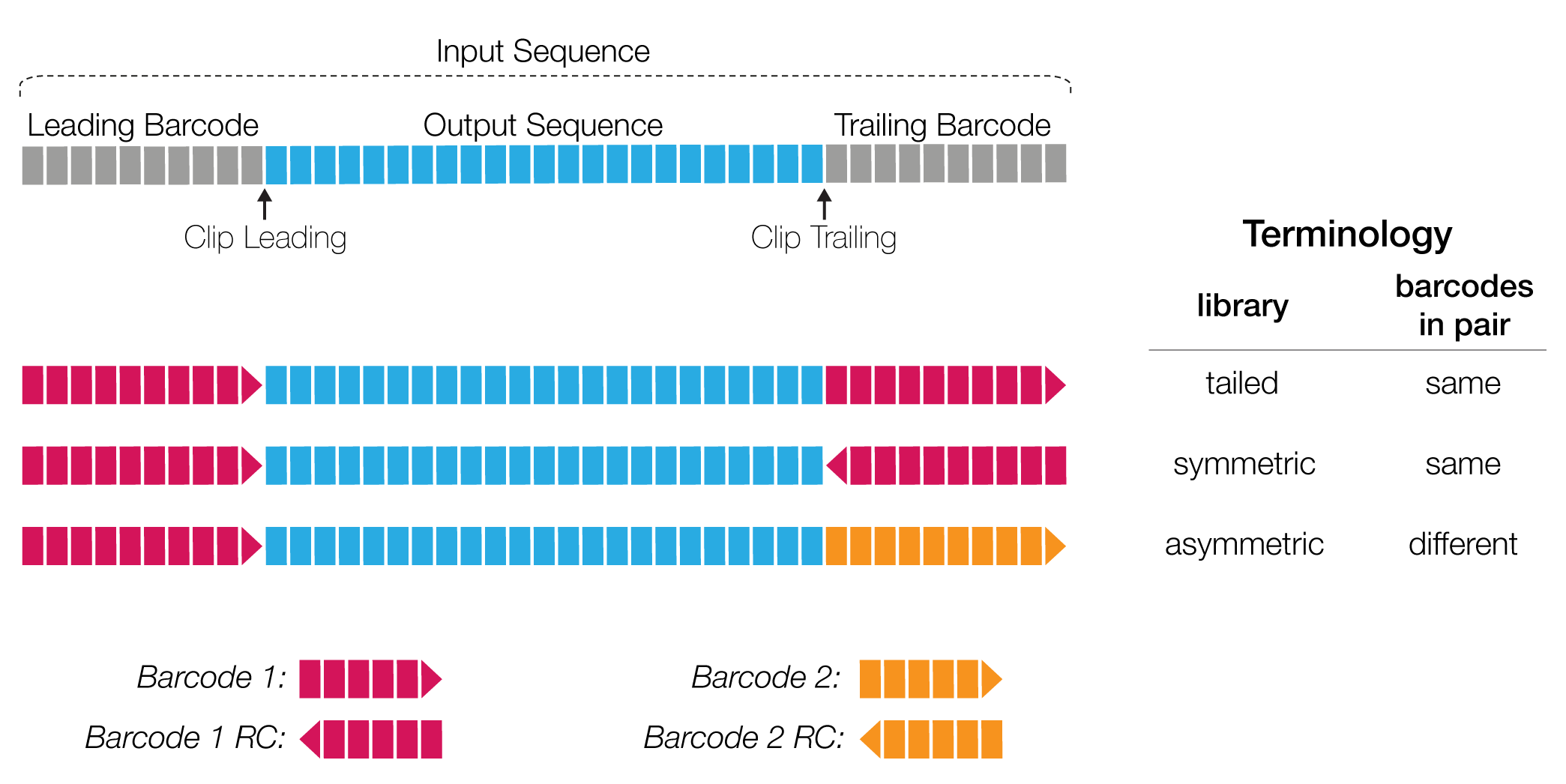How to barcode your sample
Lima can demultiplex samples that have an unique per-sample barcode pair and have been pooled and sequenced on the same SMRT cell. There are four different methods to associate barcodes with a sample, by PCR or ligation:
- Sequence-specific primers
- Barcoded universal primers
- Barcoded adapters
- Probe-based linear barcoded adapters

How to combine barcode sequences
In addition, there are three different barcode library designs. In order to describe a barcode library design, one can view it from a SMRTbell or read perspective. As lima supports CLR subread and CCS read demultiplexing, the following terminology is based on the per (sub-)read view.

In the overview above, the input sequence is flanked by adapters on both sides. The bases adjacent to an adapter are referred to as barcode regions. A read can have up to two barcode regions, leading and trailing. Either or both adapters can be missing and consequently the leading and/or trailing region is not being called.
For the symmetric and tailed library design, the same barcode is attached to both sides of the insert sequence of interest; the only difference is the orientation of the trailing barcode. For identification, one read with a single barcode region is sufficient.
For the asymmetric design, a different barcode pair is attached to the sides of the insert sequence of interest. In order to be able to identify a different barcode pair, a read with leading and trailing barcode regions is required.
Output barcode pairs are generated from the identified barcodes. The barcode names are combined using the -- infix, for example bc1002--bc1054. The sort order is defined by the barcode indices, lowest first.